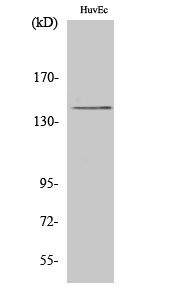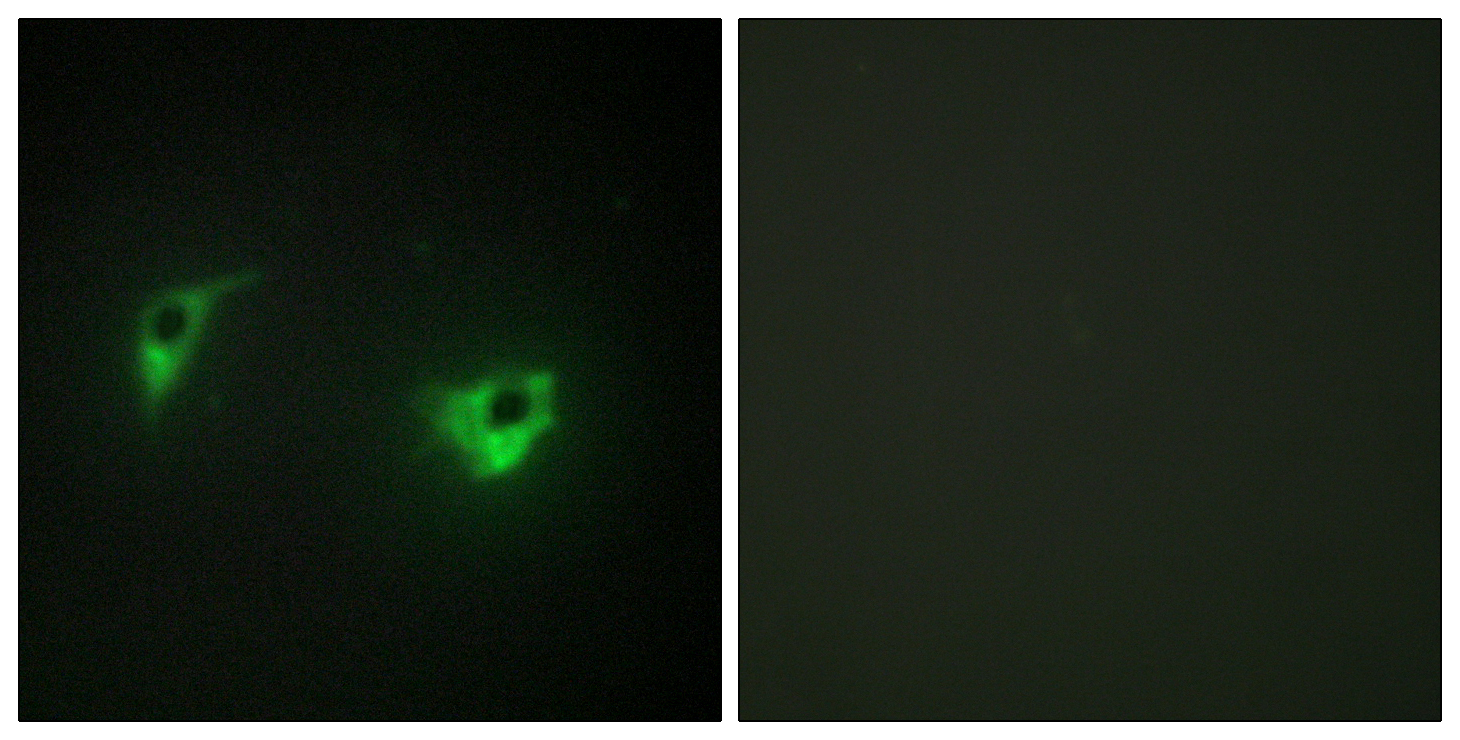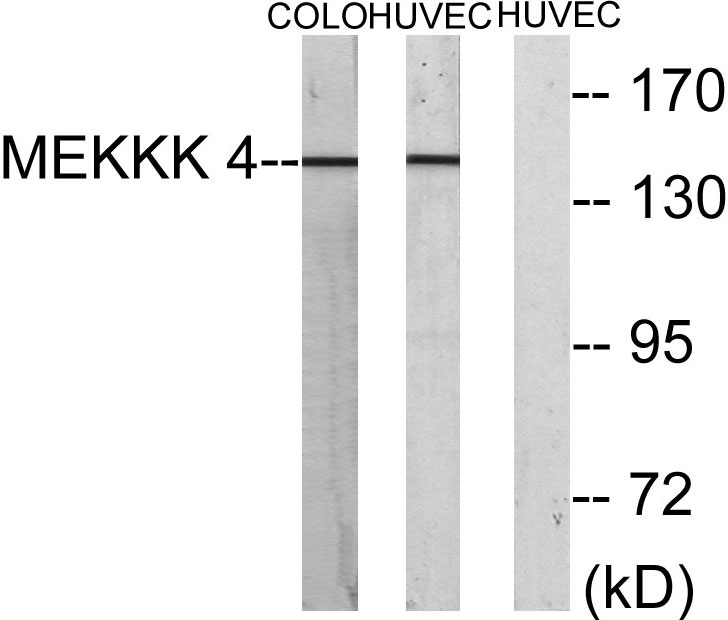HGK Polyclonal Antibody
- Catalog No.:YT2130
- Applications:WB;IF;ELISA
- Reactivity:Human;Mouse
- Target:
- HGK
- Fields:
- >>MAPK signaling pathway
- Gene Name:
- MAP4K4
- Protein Name:
- Mitogen-activated protein kinase kinase kinase kinase 4
- Human Gene Id:
- 9448
- Human Swiss Prot No:
- O95819
- Mouse Gene Id:
- 26921
- Mouse Swiss Prot No:
- P97820
- Immunogen:
- The antiserum was produced against synthesized peptide derived from human MEKKK 4. AA range:406-455
- Specificity:
- HGK Polyclonal Antibody detects endogenous levels of HGK protein.
- Formulation:
- Liquid in PBS containing 50% glycerol, 0.5% BSA and 0.02% sodium azide.
- Source:
- Polyclonal, Rabbit,IgG
- Dilution:
- WB 1:500 - 1:2000. IF 1:200 - 1:1000. ELISA: 1:40000. Not yet tested in other applications.
- Purification:
- The antibody was affinity-purified from rabbit antiserum by affinity-chromatography using epitope-specific immunogen.
- Concentration:
- 1 mg/ml
- Storage Stability:
- -15°C to -25°C/1 year(Do not lower than -25°C)
- Other Name:
- MAP4K4;HGK;KIAA0687;NIK;Mitogen-activated protein kinase kinase kinase kinase 4;HPK/GCK-like kinase HGK;MAPK/ERK kinase kinase kinase 4;MEK kinase kinase 4;MEKKK 4;Nck-interacting kinase
- Observed Band(KD):
- 142kD
- Background:
- mitogen-activated protein kinase kinase kinase kinase 4(MAP4K4) Homo sapiens The protein encoded by this gene is a member of the serine/threonine protein kinase family. This kinase has been shown to specifically activate MAPK8/JNK. The activation of MAPK8 by this kinase is found to be inhibited by the dominant-negative mutants of MAP3K7/TAK1, MAP2K4/MKK4, and MAP2K7/MKK7, which suggests that this kinase may function through the MAP3K7-MAP2K4-MAP2K7 kinase cascade, and mediate the TNF-alpha signaling pathway. Alternatively spliced transcript variants encoding different isoforms have been identified. [provided by RefSeq, Jul 2008],
- Function:
- catalytic activity:ATP + a protein = ADP + a phosphoprotein.,cofactor:Magnesium.,function:Serine/threonine kinase that may play a role in the response to environmental stress and cytokines such as TNF-alpha. Appears to act upstream of the JUN N-terminal pathway.,PTM:Phosphorylated upon DNA damage, probably by ATM or ATR.,similarity:Belongs to the protein kinase superfamily.,similarity:Belongs to the protein kinase superfamily. STE Ser/Thr protein kinase family. STE20 subfamily.,similarity:Contains 1 CNH domain.,similarity:Contains 1 protein kinase domain.,subunit:Interacts with the SH3 domain of the adapter proteins Nck (By similarity). Binds, via its CNH regulatory domain, to the N-terminal region of SPG3A.,tissue specificity:Appears to be ubiquitous, expressed in all tissue types examined. Isoform 5 appears to be more abundant in the brain, isoform 4 is predominant in the liver, skelet
- Subcellular Location:
- Cytoplasm .
- Expression:
- Widely expressed. Isoform 5 is abundant in the brain. Isoform 4 is predominant in the liver, skeletal muscle and placenta.
LncRNA ZEB1-AS1/miR-1224-5p / MAP4K4 axis regulates mitochondria-mediated HeLa cell apoptosis in persistent Chlamydia trachomatis infection Virulence. 2022;13(1):444-457. WB Human
- June 19-2018
- WESTERN IMMUNOBLOTTING PROTOCOL
- June 19-2018
- IMMUNOHISTOCHEMISTRY-PARAFFIN PROTOCOL
- June 19-2018
- IMMUNOFLUORESCENCE PROTOCOL
- September 08-2020
- FLOW-CYTOMEYRT-PROTOCOL
- May 20-2022
- Cell-Based ELISA│解您多样本WB检测之困扰
- July 13-2018
- CELL-BASED-ELISA-PROTOCOL-FOR-ACETYL-PROTEIN
- July 13-2018
- CELL-BASED-ELISA-PROTOCOL-FOR-PHOSPHO-PROTEIN
- July 13-2018
- Antibody-FAQs
- Products Images

- Western Blot analysis of various cells using HGK Polyclonal Antibody

- Immunofluorescence analysis of A549 cells, using MEKKK 4 Antibody. The picture on the right is blocked with the synthesized peptide.

- Western blot analysis of lysates from HUVEC and COLO cells, using MEKKK 4 Antibody. The lane on the right is blocked with the synthesized peptide.



